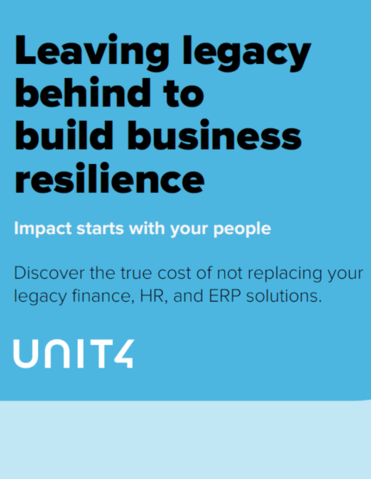The Expert View: Managing People and Processes for Effective Digital Transformation
Sponsored by Dynatrace & AWSDigital transformation in the public sector comes with its own challenges that are not easily addressed. A group of senior civil servants discussed these problems and how to fix them.

In November 2023, Dynatrace and AWS invited Central Government digital teams to a meeting in London to discuss deploying and adopting the Dynatrace unified observability and security platform.
During the meeting, a recurring theme was that many digital data and technology (DDaT) professionals struggle to drive and sustain change. The question arose as to why some organisations are able to modernise at pace and adopt new technologies and ways of working quickly, while others move at glacial speed.
Illuminating this disparity, one of Dynatrace’s first major government customers had deployed one of the UK’s largest Kubernetes environments on the AWS cloud in 2017. Years later, other government departments are still struggling to follow suit. The group agreed that what gets in the way is not technology, but people, process, and cultural challenges.
The event inspired Dynatrace and AWS to invite a group of senior civil servants and a Member of Parliament to a Business Reporter dinner briefing at the House of Lords to discuss these problems and how to fix them. David Scott, Enterprise Account Manager for Central Government & Defence at Dynatrace opened the event, stating that his company sees common challenges among its customers.
He told attendees that generating process change is a key issue. Getting that right depends on people. One attendee, who served in the Royal Navy, said the military is particularly good at handling change because it must deal with missions that change quickly and without warning.
Attitudes to change
Technology is an important enabler, but is not sufficient to create change by itself. Therefore, it is important to consider the impact of technology on individuals from the very lowest levels of the organisation. It often helps to explain the reason for change and share granular details of how things are going to be altered - particularly with regards to organisational culture. People are creatures of habit, and they adapt better to change when they can prepare themselves.
The conversation then turned to various attitudes to change, with one delegate saying that individuals can typically be divided into three camps: those who readily embrace change; those who resist it; and those who wait to see what others will do before committing. It is important to be versatile and adaptable when addressing these different attitudes.
Another delegate raised the issue of risk aversion, noting that many people fear failure and that often hinders their willingness to embrace change. In the public sector this is a particular concern because of media scrutiny. Nobody wants to see their project on the front page of a national newspaper if it goes wrong. If that does happen, they know it could cost them their job.
While private companies can afford to move fast because the board and shareholders will, to some extent, understand the priorities of the business, public sector projects attract much greater criticism. Also, these digital projects tend to take months; they can’t release dozens of changes every day like organizations in other sectors.
Accepting failure and failing fast
One attendee raised the question of what qualities make a successful team. It was suggested that one of the biggest factors was ‘psychological safety’ - the feeling of being in an environment where it is ok to fail and admit mistakes. Trust within teams is the foundation upon which successful change management can be built.
But it goes further than just accepting failure. Faye Holt, Director of Strategic Accounts & Central Government, UK Public Sector, for Amazon Web Services, said it is also important to fail fast. Too often people keep tinkering with a failing project when it is better to scrap it and try a different approach. Again, this can probably be traced back to fear of failure.
Willingness to embrace failure is one thing, but change must be meaningful and purposeful, otherwise change fatigue can set in, one attendee argued. In the public sector this can be an issue because the process is driven by politicians. A project might be scrapped because of political opposition or a change of government, rather than because it is a bad idea. That can leave people disillusioned. Likewise, different government departments cannot really be compared to parts of a commercial organisation. They are a variety of teams with different agendas, and they are often in conflict.
However, one delegate pointed out that the public sector should reflect on its successes during the Covid-19 pandemic. Departments moved fast and completed projects quickly as the emergency unfolded. However, attendees pointed out that many of the achievements during the pandemic were possible only because staff were working extremely long hours, which isn’t sustainable outside of a global emergency.
Pointing to the bright spots
Whatever the aim of the transformation project, success is rarely possible without buy-in from senior leadership, delegates said. In the public sector, senior leaders don’t always understand the value of digital projects but if they are educated and told what problem will be solved, then they can become champions for the project.
One example of a public sector service that attendees agreed works well is the passport office. They praised the speed and ease of renewing a passport, particularly when compared to how that same process is handled in other countries. Moreover, they emphasised that this isn’t the only success, and that the public sector needs to be better at drawing attention to projects that have gone well. Communicating these successes more actively could inspire other civil servants and reassure taxpayers that they are getting value for money.
One attendee said this technique is mentioned in the book Switch, by Chip and Dan Heath, which talks about ‘pointing to the bright spots’ - things that are being done well - as a way of encouraging change. The authors say that our emotional mind can be pictured as an elephant and the rational mind as its rider. No matter what the rider does, the elephant won’t move unless it wants to. Just as food can motivate the elephant, so we can gain emotional strength to change by ‘feeding’ our motivation.
Incentives are a vital component of successful change. For example, sometimes improving efficiency will reduce your budget, making your job harder - so why improve efficiency in the first place? Likewise, if staff think that a change will have a negative effect on their work then they have little incentive to help implement it.
But getting buy-in isn’t the only staffing problem that attendees identified. They also noted that recruitment in the public sector can be a challenge. Recent rules mandating that sixty percent of work time must be spent in the office has made it difficult to recruit people who prefer to work remotely, for example. Since the public sector cannot compete on salary with the private sector, working conditions are an important benefit.
Even so, the civil service is more flexible than it was, one attendee pointed out, explaining that she was able to balance her career with having children. Another thing civil servants can do, attendees argued, is emphasise the interesting projects on offer in the public sector and the meaningful impact those projects can have on huge numbers of people.
Sharing a long-term vision
Asked about obstacles to adopting new technology, several delegates pointed to the fragmentary nature of the public sector. Different departments don’t share data; even two hospitals will not share data with each other automatically. They argued that success would be more likely if technology was funded centrally so that everyone could adopt it.
Foreign countries can offer inspiration for how to handle digital transformation in a connected way. For example, attendees noted that in Iceland every new citizen is assigned a number at birth that will be tied to all the services they receive. Estonia, similarly, has shaped its services around a digital-first offering.
They also said that longer-term commitments are necessary so departments can more easily work towards a fixed goal. Instead of setting out a detailed process for how a specific technology should be implemented to solve a particular problem, it’s better to define the broad goal over a fixed time and allow the department to be flexible in achieving it.
For example, if after three years of working towards a goal it becomes clear that a different technology would be better, then it should be easy to switch to that and keep going. A group of people put together to address a problem is all that is needed; they don’t need to work under a prescriptive project plan.
Another attendee suggested that for certain public sector areas, such as health and education, it would be better to have a Royal Commission every 20 years that would agree long-term aims that would be immune to political whims. This, too, would allow for a more consistent vision.
Protecting long-term projects from a political back-and-forth has always been a challenge in the public sector, however, and those at the briefing accepted that without a significant change to the UK’s political system, this will be the case for some time to come.
Summing-up, Mr Scott said that the idea of psychological safety is particularly important. People should feel that they can drive positive change, particularly under media scrutiny. He agreed that a good way to increase psychological safety would be to share stories of positive achievement.
Ms Holt added that it is important to remember that the private sector deals with many of the same challenges too and struggles to solve them. But if the culture of change is in place, then it is simply a matter of creating a plan to break through the boundaries.
To find out more please visit www.dynatrace.com.

Business Reporter Team
Related Articles
Most Viewed
23-29 Hendon Lane, London, N3 1RT
23-29 Hendon Lane, London, N3 1RT
020 8349 4363
© 2024, Lyonsdown Limited. Business Reporter® is a registered trademark of Lyonsdown Ltd. VAT registration number: 830519543





